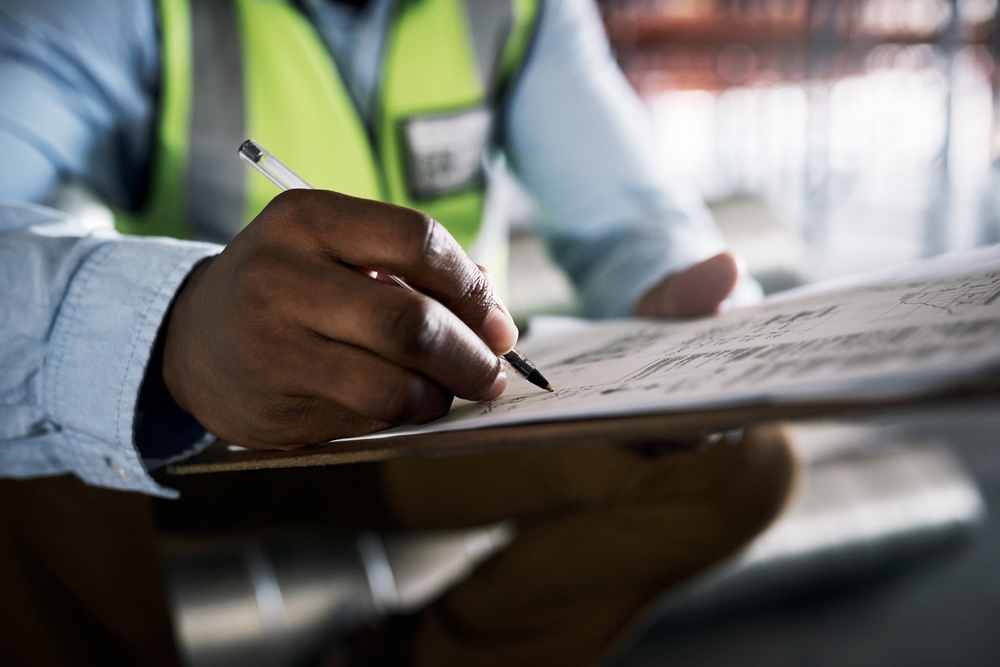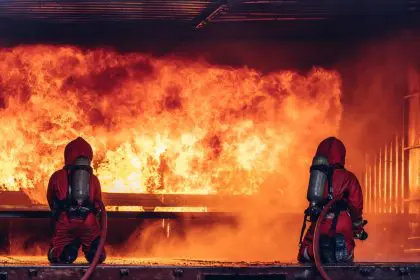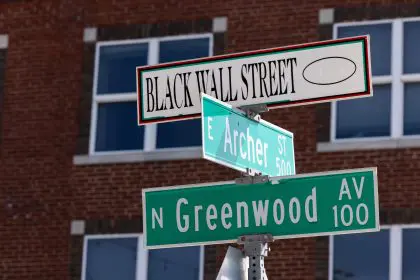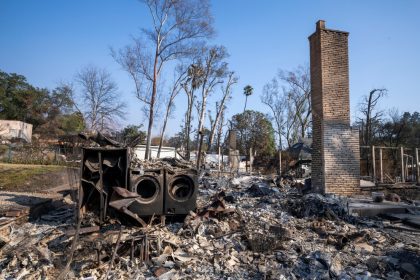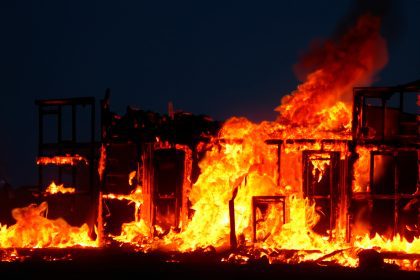The devastating Eaton Fire that swept through Altadena, California in January has prompted an unprecedented community-led recovery effort spearheaded by Black architects, engineers, and industry professionals. The Altadena Rebuild Coalition represents a grassroots response to help residents navigate the complex rebuilding process while preserving the community’s historical identity and character.
This professional coalition addresses both immediate recovery needs and long-term sustainability goals, demonstrating how community-centered design can guide disaster recovery efforts. The initiative reflects broader principles of equitable development that prioritize resident voices and local expertise over external commercial interests.
Eaton Fire creates devastating community impact
The January wildfire destroyed more than 9,000 structures throughout Altadena, including residential homes and commercial businesses that formed the economic backbone of the community. The scale of destruction created an urgent need for coordinated recovery efforts that could address both immediate housing needs and long-term community planning considerations.
UCLA research revealed that the fire disproportionately affected Black households in Altadena, with nearly half experiencing significant damage or complete property loss. This demographic impact underscored existing vulnerabilities within the community while highlighting the need for culturally informed recovery approaches that understand historical and economic contexts.
The destruction threatens generations of accumulated wealth through homeownership, as Altadena has historically maintained Black homeownership rates that exceed both state and national averages. This economic dimension of the disaster extends beyond immediate housing needs to encompass broader questions about community stability and generational wealth preservation.
Professional coalition emerges from community connections
The Southern California Chapter of the National Organization of Minority Architects formed the Altadena Rebuild Coalition as a direct response to the community crisis. Many coalition members, including president Matthew J. Trotter, lost their own homes in the fire, creating personal stakes in the recovery process that inform their professional contributions.
The coalition’s formation demonstrates how professional networks can mobilize quickly to address community needs during crisis situations. Members bring specialized expertise in architecture, engineering, and construction management while maintaining deep understanding of local community dynamics and cultural considerations.
Personal investment in the community’s recovery creates authentic motivation for coalition members who balance professional expertise with lived experience of fire impacts. This combination of technical knowledge and personal connection enables more effective and culturally responsive recovery planning approaches.
Comprehensive support addresses multiple recovery challenges
The coalition provides free guidance services to residents navigating complex rebuilding processes that involve insurance claims, permitting procedures, and construction planning. Workshop programming covers essential topics including insurance policy interpretation, soil testing requirements, and strategies for avoiding predatory development practices.
Educational programming helps residents understand their rights and options during the rebuilding process while connecting them with appropriate professional resources. This approach empowers community members to make informed decisions about their properties while protecting them from exploitation during vulnerable periods.
Coalition member Eletrice Harris emphasizes the importance of building trust within the community through consistent support and reliable information sharing. This relationship-building approach recognizes that effective recovery requires ongoing collaboration between professionals and residents rather than one-time consulting relationships.
Community identity preservation guides development principles
Architect Charles T. Bryant, a 40-year Altadena resident who lost his home in the fire, represents the coalition’s commitment to maintaining neighborhood character during rebuilding efforts. His involvement demonstrates how long-term residents can guide recovery processes to preserve community identity while accommodating necessary changes.
The coalition’s approach prioritizes preventing large-scale developer takeovers that might transform Altadena’s character through standardized construction approaches. This resistance to generic development reflects broader community control principles that emphasize local decision-making over external commercial interests.
Preservation efforts focus on maintaining architectural diversity and community scale that have historically defined Altadena’s residential character. These aesthetic and planning considerations serve broader goals of ensuring that rebuilt neighborhoods remain accessible and welcoming to existing residents.
Sustainable and equitable practices shape rebuilding standards
Recent coalition programming has addressed sustainability and fire safety considerations that should inform reconstruction planning throughout the affected areas. Panel discussions at the Altadena Library bring together experts to discuss integration of environmental considerations with community development goals.
Michael Anderson from Anderson Barker collaborates with the coalition to ensure rebuilding practices incorporate both environmental sustainability and social equity principles. This partnership demonstrates how established firms can contribute specialized expertise while supporting community-led recovery initiatives.
Fire safety improvements must balance protection needs with affordability considerations that enable all residents to participate in rebuilding efforts. The coalition advocates for safety measures that enhance community resilience without creating financial barriers that exclude lower-income households from recovery opportunities.
Next generation engagement supports long-term planning
University students contribute fresh perspectives to recovery planning while gaining practical experience in community-centered design approaches. Armstrong’s Architecture + Advocacy nonprofit demonstrates how emerging professionals can contribute to social justice goals through design practice.
Student involvement ensures that recovery planning incorporates contemporary best practices in sustainable design and community engagement while building capacity for future community development projects. This educational dimension creates lasting benefits that extend beyond immediate fire recovery needs.
Collaborative projects between established professionals and emerging designers create mentorship opportunities while bringing innovative approaches to traditional rebuilding challenges. These intergenerational partnerships strengthen both immediate recovery efforts and long-term community development capacity.
Community-centered design prioritizes resident input
The concept of citizen architects emphasizes resident participation in design processes that affect their neighborhoods and daily lives. This approach recognizes that community members possess essential knowledge about local needs, preferences, and cultural considerations that inform effective design solutions.
Participatory design processes create opportunities for residents to influence rebuilding outcomes while building stronger connections between neighbors and design professionals. These collaborative relationships support more democratic development approaches that reflect community priorities and values.
Historical significance motivates preservation efforts
Altadena’s legacy as a community with strong Black homeownership traditions adds urgency to recovery efforts that protect accumulated generational wealth. The threat of losing this economic foundation motivates both professional coalition members and residents to pursue rebuilding approaches that maintain community stability.
Historical preservation efforts extend beyond individual property restoration to encompass broader neighborhood characteristics that have supported multigenerational families and community institutions. This comprehensive approach recognizes that effective recovery must address both physical and social infrastructure needs.
The coalition’s work connects immediate disaster recovery with longer-term community development goals that support continued Black homeownership and economic stability. This perspective ensures that rebuilding efforts contribute to community strength rather than inadvertent displacement through rising costs or changing character.
Model for inclusive disaster recovery emerges
The Altadena Rebuild Coalition demonstrates how professional expertise can serve community-led recovery efforts that prioritize equity and resident empowerment. This model offers lessons for other communities facing similar challenges from natural disasters or economic displacement pressures.
Successful community-centered recovery requires sustained collaboration between residents, design professionals, and supportive institutions that can provide resources without imposing external agendas. The coalition’s approach balances professional expertise with community wisdom to create more effective and culturally appropriate solutions.
The initiative’s emphasis on preventing predatory development while supporting resident-controlled rebuilding establishes precedents for disaster recovery that strengthens rather than displaces existing communities. These principles offer valuable guidance for similar efforts in other locations facing comparable challenges.

